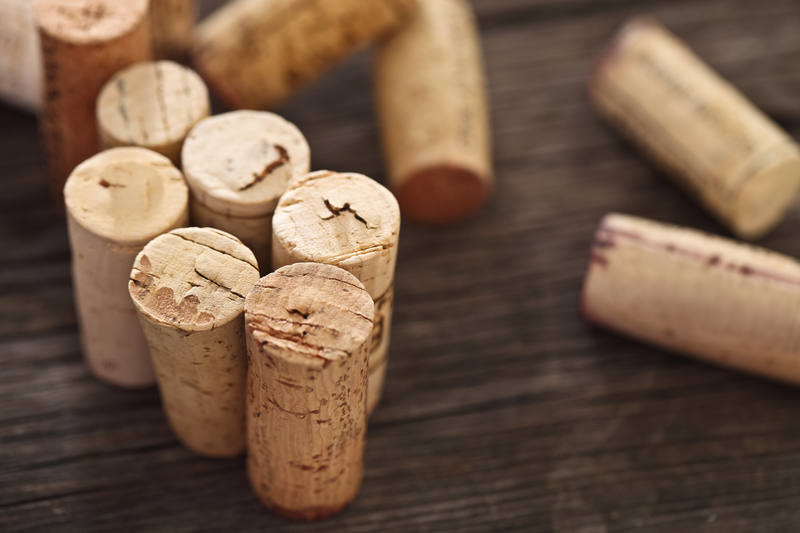What to Do with Pots and Pans You Can't Use Anymore: Ultimate Guide to Responsible Disposal & Creative Reuse
If you've recently decluttered your kitchen, you might be wondering, What to do with pots and pans you can't use anymore? Whether your cookware is chipped, scratched, warped, or simply outdated, you don't need to throw it straight in the trash. There are numerous smart, eco-friendly, and even profitable ways to dispose of, recycle, or repurpose pots and pans. In this comprehensive guide, we'll explore everything from responsible recycling methods to upcycling projects and charitable donations, ensuring your old cookware gets a second lease on life.
Why It's Important to Responsibly Dispose of Unusable Pots and Pans
Millions of pots and pans end up in landfills every year. Most cookware is made from non-renewable resources such as aluminum, stainless steel, copper, or nonstick coatings, which can take decades to break down and may leach contaminants into the environment. Disposing of pots and pans responsibly not only reduces waste but often gives these items a valuable afterlife--whether as raw materials, inventive new items, or useful donations.
- Landfill reduction: Less waste means less pollution and a healthier planet.
- Resource conservation: Recycling cookware recovers valuable metals.
- Community support: Donating or repurposing helps others and can support good causes.

Are Your Pots and Pans Really Unusable?
Before saying goodbye to your unused pans and pots, take a moment to assess their actual condition. Sometimes, simple fixes or alternative uses can extend their lifespan.
Basic Checks
- Warped base: Warped pans may not sit evenly on a stove, but they can serve other uses.
- Scratched or peeling nonstick coating: It's unsafe to cook with, but these pans have upcycling potential.
- Loose or broken handles: Handles are often easy to replace or repair.
- Stains or discoloration: Superficial and typically doesn't affect function.
*Remember that nonstick cookware with damaged coatings is not safe for cooking but still has possibilities outside the kitchen.
How to Recycle Old Pots and Pans
The first choice for disposing of old cookware should always be recycling when possible. Here's how to ensure your pots and pans find their way back into the resource chain.
Step-by-Step Guide to Recycling Cookware
- Check local recycling guidelines: Most city recycling programs do not accept pots and pans in curbside bins--metal recyclers or special drop-off sites are the best bet.
- Separate materials: Some pots, such as those with plastic handles or glass lids, should be disassembled. Remove non-metal parts when possible.
- Take them to a scrap metal facility: Metal recyclers accept aluminum, stainless steel, copper, and cast iron cookware--even if they're coated or the nonstick layer is damaged!
- Ask about special events: Some communities hold annual recycling days for bulky household items, including cookware. Check with local waste management authorities.
What Types of Pots and Pans Can Be Recycled?
- Stainless steel: Highly recyclable and accepted by most metal scrap yards.
- Aluminum: Ensure the pan is clean and free from excessive food build-up.
- Copper: Valuable for recycling, sometimes accepted at higher rates.
- Cast iron: Durable and welcome at most scrap yards.
- Nonstick: Can usually be recycled if separated, but not with regular household recycling.
Pro Tip: If you're not sure what your pans are made of, a quick magnet test can help. If a magnet sticks, it's steel or iron; no stick means likely aluminum or copper.
Donating Pots and Pans in Usable Condition
If your old pots and pans are clean, functional, and free from major damage, donation is a wonderful option. Giving cookware a second life can support someone in need or help community organizations with their missions.
Where to Donate Cookware
- Thrift stores: Goodwill, Salvation Army, and other regional stores gladly accept gently used cookware.
- Homeless shelters and soup kitchens: Many shelters cook meals for dozens or hundreds daily and always appreciate extra equipment.
- Community centers and churches: Reach out to local programs or food banks.
- Charity shops & garage sales: If you're holding a sale for a cause, cookware is a common seller.
- Online marketplace "free" groups: Apps and websites like Freecycle, Facebook Marketplace, or local community boards let you give cookware directly to neighbors.
Always clean items and check that they are functioning before donation. Charities usually cannot repair or clean damaged goods before distributing.
Can You Sell Old Pots and Pans?
You'd be surprised at how many people snap up secondhand cookware! Many types of vintage, antique, or gently used pots and pans (especially cast iron, copper, and recognizable brands) fetch good prices online and at flea markets.
Best Places to Sell Used Cookware
- Online Marketplaces: eBay, Facebook Marketplace, Craigslist, Poshmark Home, Mercari, and OfferUp.
- Consignment stores: Some high-end resale shops accept quality cookware and kitchen goods.
- Yard sales: A tried-and-true method to move old pans and earn a little cash.
- Antique dealers: Collectors pay a premium for desirable vintage or rare pieces.
Polish up cast iron or high-end cookware and provide clear photos for online listings to attract more buyers.
Creative Ways to Repurpose Pots and Pans You Can't Use
For those who enjoy upcycling and DIY projects, your unusable pans and pots can find new life in fun and functional ways! Here are some creative upcycling ideas that will inspire your inner artist or gardener:
Upcycling Projects for Old Cookware
-
Planters and Herb Gardens:
Fill a large pot, saucepan, or even a stockpot with soil and use it for indoor or outdoor plants. Make sure to drill a drainage hole or add a layer of pebbles. -
Unique Wall Art:
Paint and hang old frying pans for a rustic kitchen wall display, or use the bottoms as chalkboards. -
Organizational Holders:
Mount lids or shallow pans as mail holders, jewelry trays, or catch-alls for keys and change. -
Bird Feeders:
Attach wire to a pot and suspend it from a tree, fill with bird seed for a quirky feeder. -
Candle Holders or Lanterns:
Tealights or pillar candles look striking in small saucepans or cast iron skillets. Poke holes for stars or patterns as lantern cutouts. -
Clocks:
Add a clock mechanism to a pan for a creative kitchen clock.
Turn Handles and Lids into Something New
- Lid coat hooks: Mount pan lids on a wall to hang coats, towels, or bags.
- Serving trays: Attach handles to the side of a large skillet or pan base for a unique tray.
- Lid wind chimes: String lids and metal utensils for a whimsical garden chime.
With some imagination, the possibilities for old pots and pans are nearly endless!
Environmental Considerations: Why Not to Throw Pans in the Trash
Simply tossing unusable pans and pots in the garbage is the least eco-friendly option. Landfills are quickly running out of space, and metals and synthetic coatings can leach hazardous chemicals as they break down. Recycling and reusing cookware not only conserves raw materials but also reduces the energy and emissions associated with producing new kitchenware from scratch.
Common Materials in Cookware and Their Impact
- Aluminum: Readily recyclable but highly energy-intensive if newly mined.
- Stainless Steel: 100% recyclable and fetches a decent price at scrap yards.
- Copper: Valuable, but mining is environmentally impactful--recycling is always better.
- Nonstick Coatings (PTFE): Should never enter the environment directly; always recycle responsibly or upcycle.
By making the effort to properly dispose of old cookware, you're doing your part for a greener planet and often giving your items a renewed purpose.

Frequently Asked Questions: What to Do with Pots and Pans You Can't Use
Can you put old pans in the recycling bin?
No, most curbside programs do not accept kitchenware due to their mixed materials. Instead, take them to local scrap yards or special recycling events.
Are nonstick pans recyclable?
They can be, but the nonstick coating must be removed if possible. Some recyclers accept nonstick pans as scrap metal, but always check first.
How do I know if my pans are safe to donate?
Gently used pans without chipped coatings, rust, or loose parts are usually fine to donate. Always wash them thoroughly before donating.
Are there any hazardous materials in old cookware?
Some vintage cookware, especially nonstick or enamel-coated items, may contain lead or other hazardous substances. When in doubt, recycle as scrap metal and avoid donating.
Conclusion: Give a Second Life to Your Old Pots and Pans
What to do with pots and pans you can't use anymore? With so many eco-friendly, creative, and charitable options, throwing your old cookware in the trash should always be the last resort. By recycling, donating, selling, or upcycling your cookware, you can:
- Reduce landfill waste and environmental impact
- Support your community through donations
- Unleash your creativity with upcycling projects
- Even earn extra money selling valuable or vintage pieces
*Let your old pots and pans enjoy a fresh chapter--whether it's as a quirky household item, a valuable raw material, or a much-needed tool for someone else. The next time you clean out your kitchen, remember these tips so your cookware can go on to make a difference!*
Looking for More Practical Eco-Friendly Kitchen Tips?
Explore our related guides on how to recycle kitchen appliances and creative upcycling ideas for a zero-waste lifestyle!